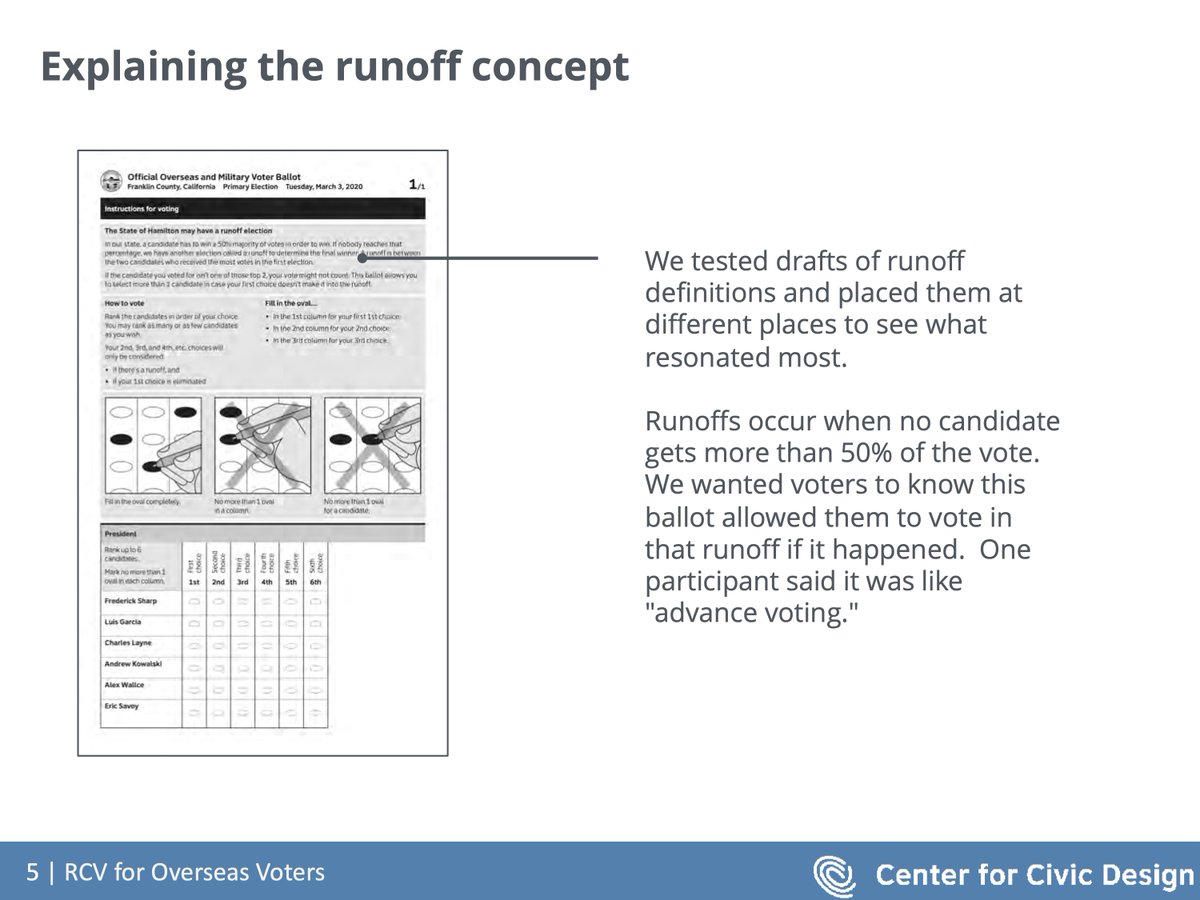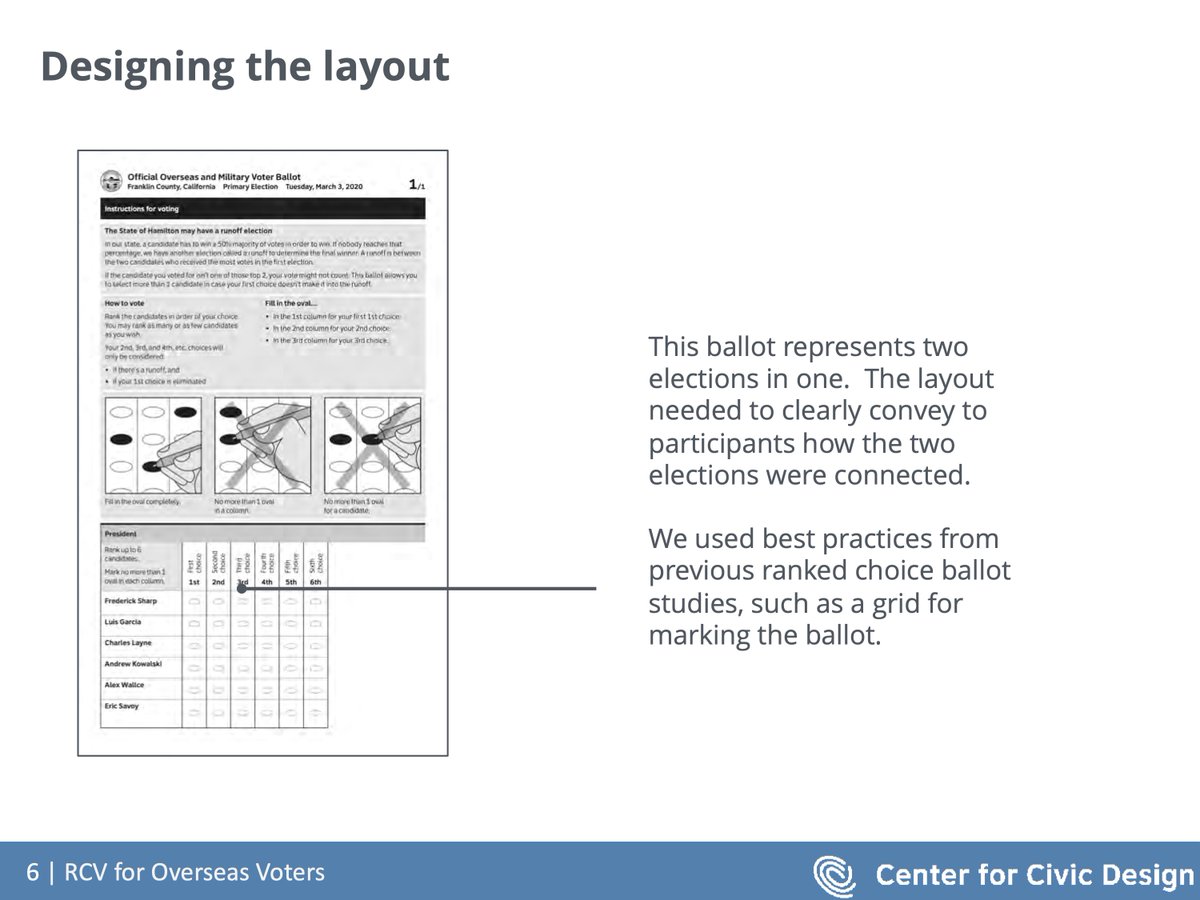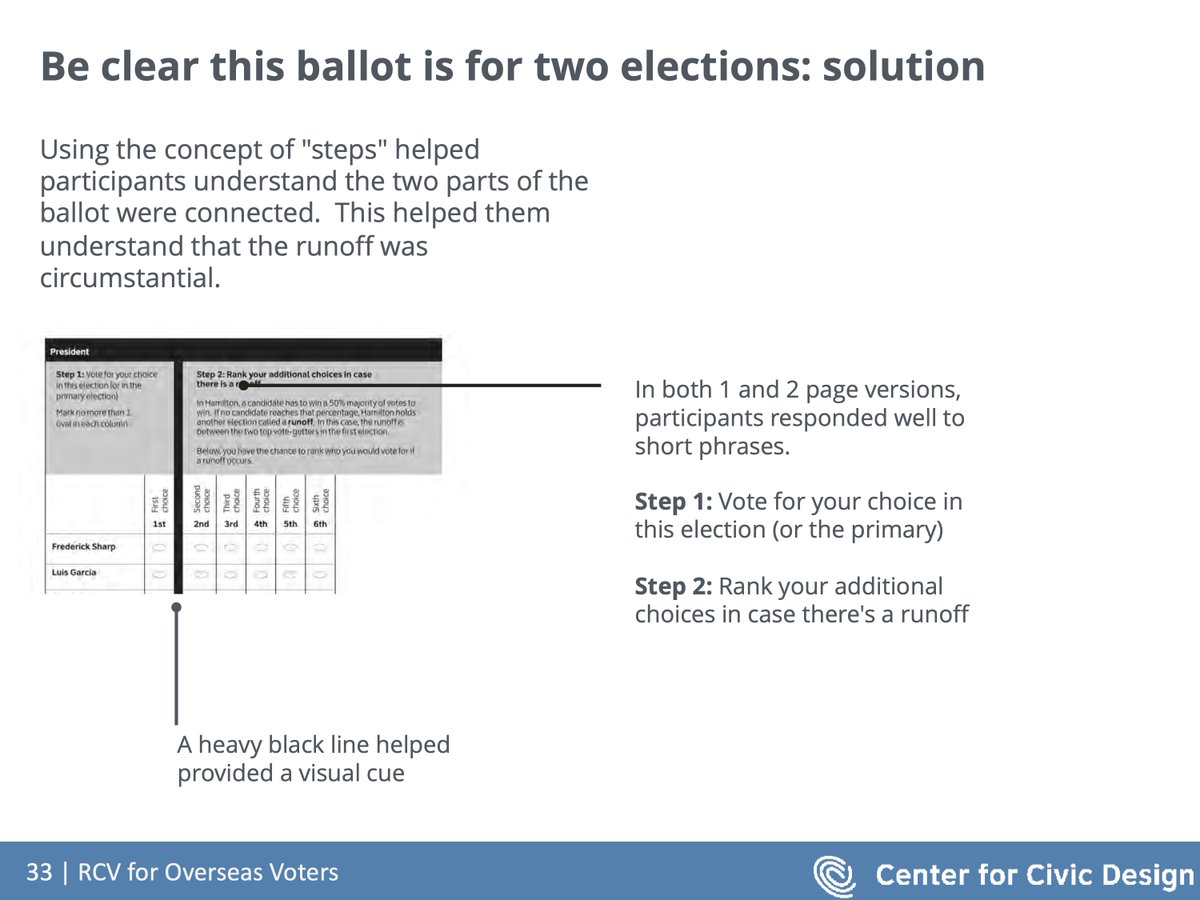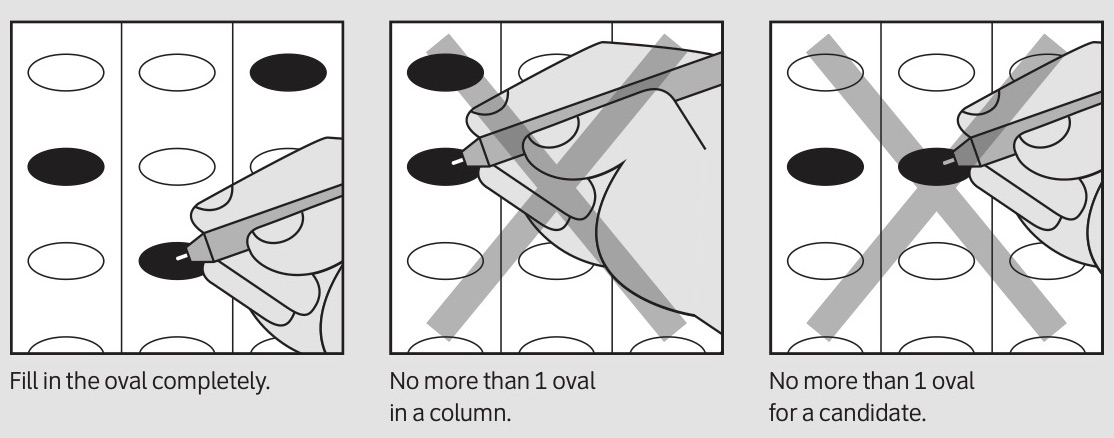We’ve been getting a lot of questions about #RankedChoiceVoting recently, so here’s a quick thread with insights from a project on #RCV ballot design for overseas voters to participate in runoff elections.
The full report can be found here: https://civicdesign.org/wp-content/uploads/2017/07/CCD_RCV_Overseas-Runoff-Voting-Report_2020-0604.pdf">https://civicdesign.org/wp-conten...
The full report can be found here: https://civicdesign.org/wp-content/uploads/2017/07/CCD_RCV_Overseas-Runoff-Voting-Report_2020-0604.pdf">https://civicdesign.org/wp-conten...
2/ Because runoff elections often take place shortly after the first election, overseas voters may not have time to request, receive, complete, and return a 2nd ballot. To get around that, we set out to design a single mailing that would include an rcv ballot in case of a runoff.
3/ Our design challenge was to help overseas voters understand how their ballot would be used in a first election, and then in a runoff, if one occurs.
4/ We selected 17 participants, age 20-80, who had previously voted in US elections while living in Australia, Mexico, Fiji, Vietnam, Morocco, and Rwanda, among other countries.
5/ Feedback from participants revealed that there isn& #39;t one perfect ballot design. Rather, we uncovered a set of design insights to follow that meet the unique needs of overseas voters.
Read on for those insights...
Read on for those insights...
6/ Give voters the information they need to prepare to vote.
That means explaining the concept of ranked choice voting and providing clear instructions for how to use this style of ballot.
That means explaining the concept of ranked choice voting and providing clear instructions for how to use this style of ballot.
7/ It was also important to explain how this ballot saves time and hassle.
It turned out we need to explicitly say using this rcv ballot "means you won& #39;t have to request another overseas ballot." Making it bold helped, too. Participants were relieved and pleased.
It turned out we need to explicitly say using this rcv ballot "means you won& #39;t have to request another overseas ballot." Making it bold helped, too. Participants were relieved and pleased.
8/ Present information in clear, simple language.
We talk about plain language all the time, and it& #39;s definitely a must when explain two complicated, unusual concepts like RCV and runoff elections. Also be clear in the instructions that voters don’t have to mark all choices.
We talk about plain language all the time, and it& #39;s definitely a must when explain two complicated, unusual concepts like RCV and runoff elections. Also be clear in the instructions that voters don’t have to mark all choices.
9/ Use best practices for RCV ballot design including using a grid to mark the RCV portion of the ballot.
One participant described that their eyes went directly to the grid, and that it visually communicated that this ballot would allow several choices.
One participant described that their eyes went directly to the grid, and that it visually communicated that this ballot would allow several choices.
10/ Make the ballot fit an A4 size sheet of paper.
One participant who resized her ballot herself was afraid it would cause an error when read by the scanner at her clerk& #39;s office. Blank space left participants concerned that something hadn& #39;t printed correctly.
One participant who resized her ballot herself was afraid it would cause an error when read by the scanner at her clerk& #39;s office. Blank space left participants concerned that something hadn& #39;t printed correctly.
11/ One challenge was to be clear that this ballot was for two elections. Participants needed strong visual cues to separate the elections.
Using the concept of "steps" helped participants understand the two parts of the ballot were connected.
Using the concept of "steps" helped participants understand the two parts of the ballot were connected.
12/ This project wrapped up in June 2020. But we haven& #39;t stopped learning about and testing RCV.
One major change that we’ve made to our RCV work over the last year has been to change the images
One major change that we’ve made to our RCV work over the last year has been to change the images
13/ In the project we were just talking about, we used the following illustrations to explain the how to vote using an RCV ballot
14/ We’ve done more testing and redesigned the illustrations based on feedback from voters.
In essence, we zoomed out to provide more context. In the new illustrations, voters can see the column titles as well as grey squares on the left hand side to hint at the candidate names
In essence, we zoomed out to provide more context. In the new illustrations, voters can see the column titles as well as grey squares on the left hand side to hint at the candidate names
15/ We& #39;re still learning about RCV and will continue to share new insights as the work goes on
For now, explore some of our past research: https://civicdesign.org/projects/rcv/
and">https://civicdesign.org/projects/... get in touch anytime!
For now, explore some of our past research: https://civicdesign.org/projects/rcv/
and">https://civicdesign.org/projects/... get in touch anytime!

 Read on Twitter
Read on Twitter






